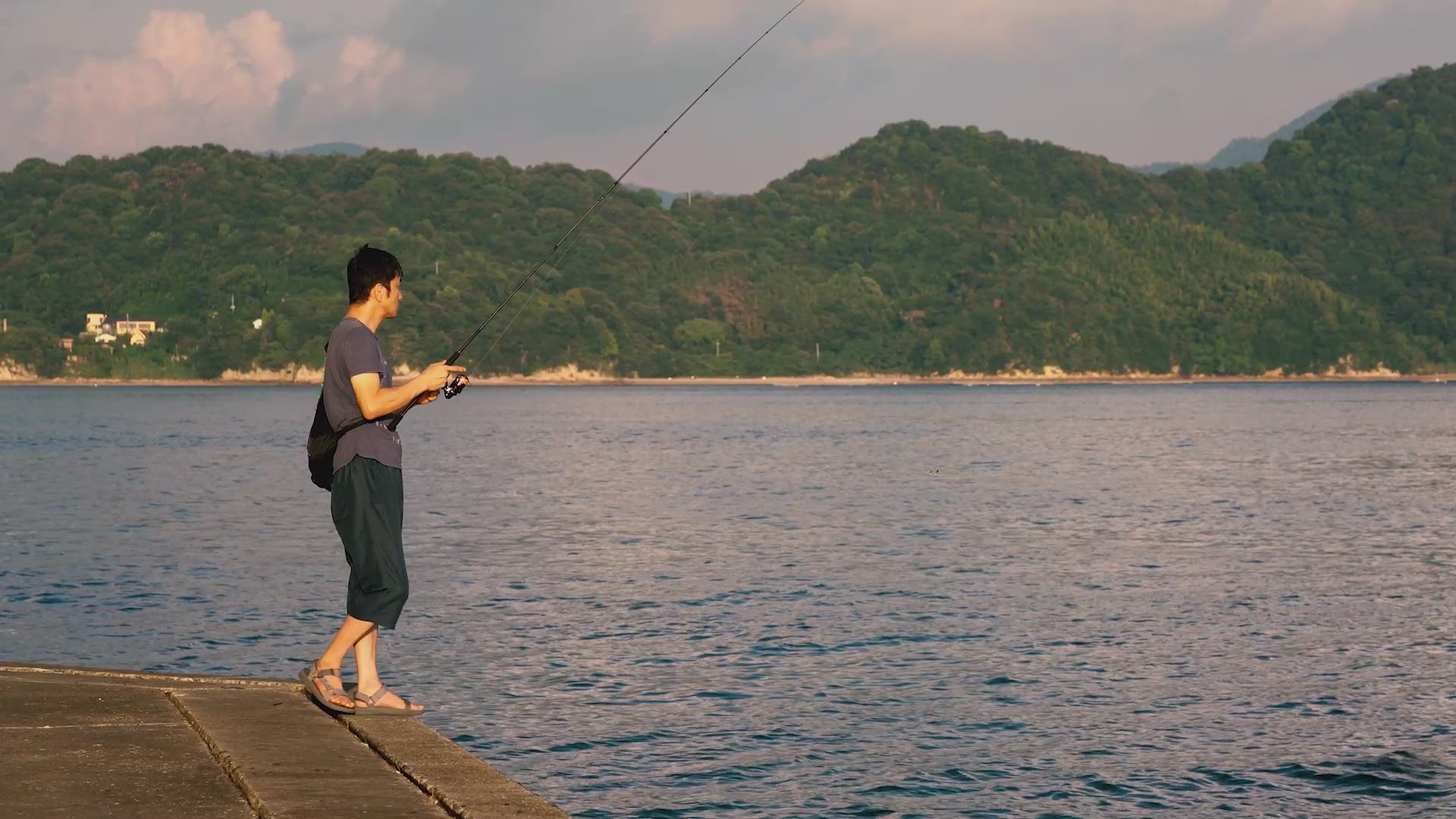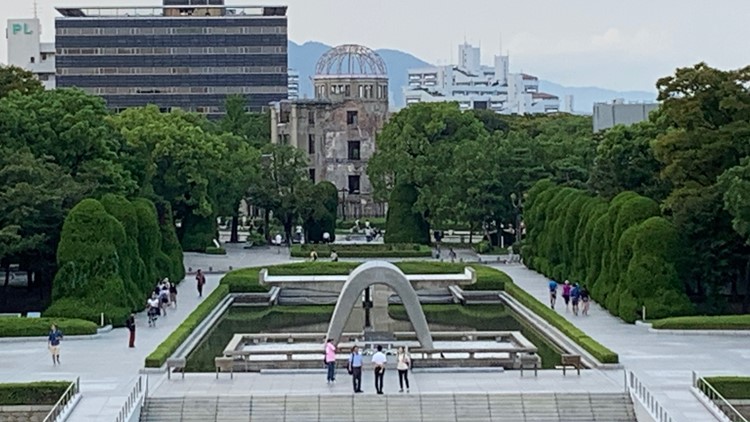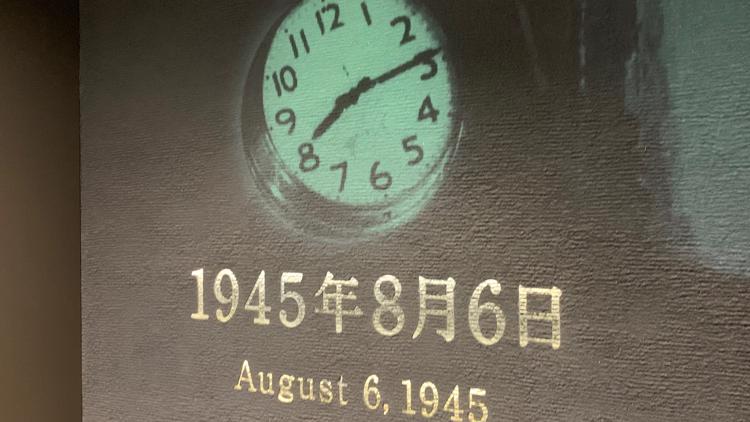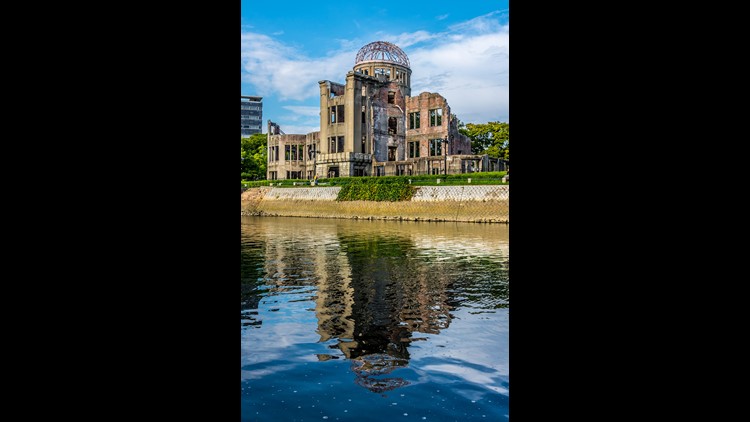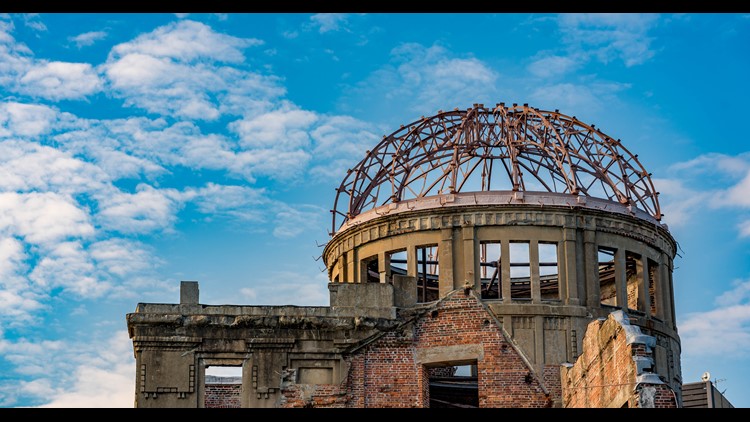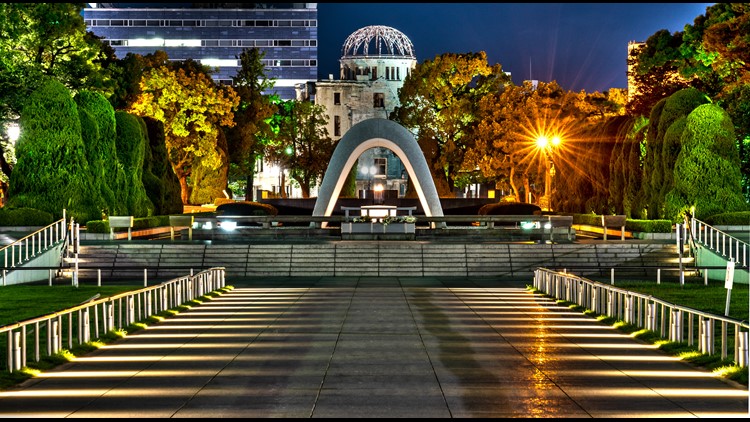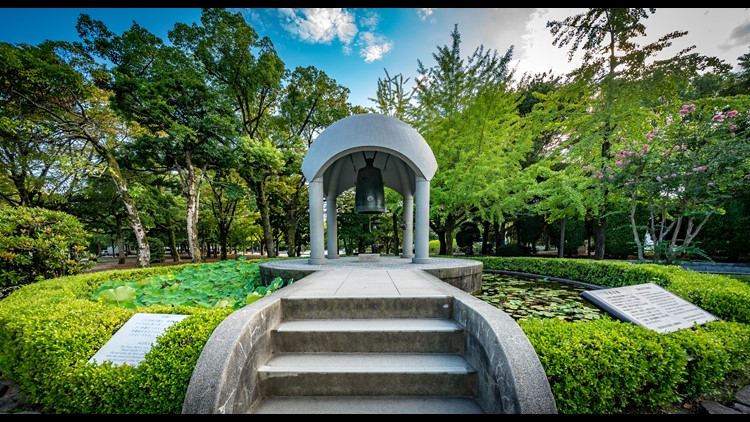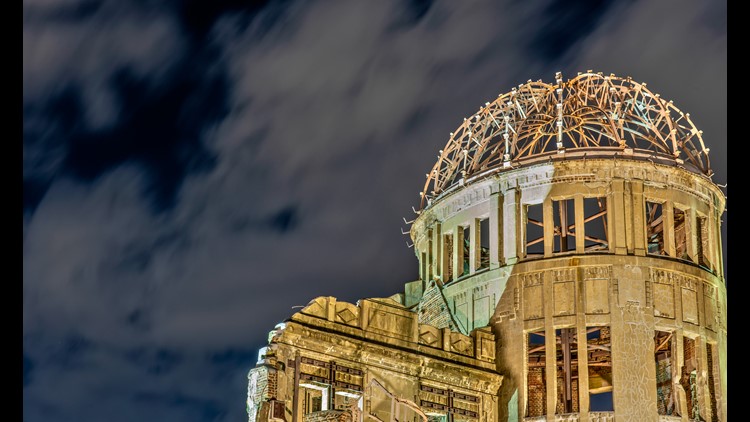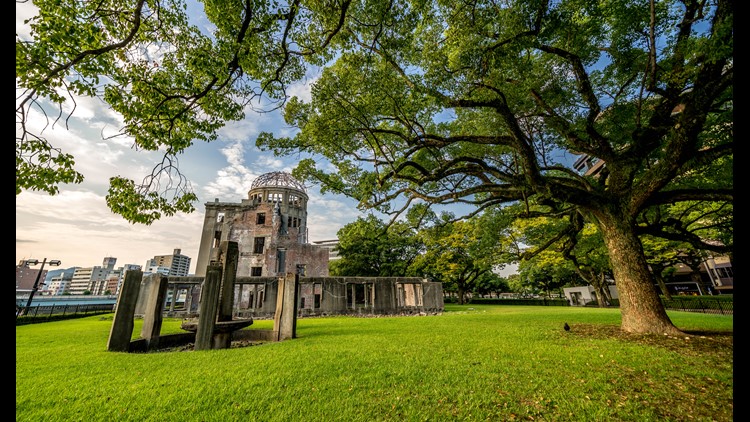HIROSHIMA, Japan — Visit Hiroshima and you will see the beauty and the scars. At the same time every morning, the city marks the moment when the first atomic bomb dropped on Hiroshima.
"It was dropped 8:15am. Detonated 600 meters above the city and created the worst possible destruction that anyone could ever imagine," said tour guide Huge Cann. "Anyone within the first square mile was either badly injured with burns or from the concussion of the bomb. Anyone within the first 100 meters was evaporated, vaporized."
For Kiyomi Kono, the memories are seared into her mind.
"It was like walking through hell. I'll never forget the scenes before my eyes," Kono said.
Kono was 14 years old when the bomb exploded on August 6, 1945.
"At the time, we were up in the countryside. We heard a massive thunderclap going off. Then, this huge cloud rose up behind the hills," Kono said. "When I got down into the city, Hiroshima just disappeared. It ceased to exist."
Over the years Kono processed what happened by painting her memories.
"When I made these pictures, I could hear the voices and see the images vividly in my mind's eyes," Kono said.
What she remembers is horrific.


"People were walking with their skin dripping. Their clothes and hair were tattered. People were walking around completely naked. It was hard to recognize them as fellow human beings," Kono said. "Their guts were hanging out. Their tongues were gone. All sorts of horrible injuries. In the area where my sister was living was a hospital. We were in that area. At the hospital, I came across 20-30 bodies piled up around the hospital. It was a horrifying sight," Kono said.
Kono led me through the Hiroshima Peace Memorial Museum.
"We wore sandals back then. I remember stepping over dead bodies," Kono said. "There were people stacked up. Soldiers were gathering bodies and cremating them. We saw a bus. All that was left were arms of people hanging onto the straps. There were just arms dangling."


The exhibits are sobering.
"Radiation has no shape. No color. No sound or smell. It enters your body and kills you," Kono said.
Kono said many Hiroshima residents knew very little about the effects of the blast.
"The general headquarters had suppressed all news for the first ten years. There was no transparency. No one really knew what happened," Kono said. "Word began to filter out about the atomic experiments in the U.S. That's the way we found out about it."
Yasuka Kondo was 4 years old when the bomb exploded two miles from her home.
"I was playing when the bomb was dropped," said Kondo. "There was a flash. We were stunned. We tried to shield ourselves near a small river. My little sister was injured in the blast. My cousin had been close to the area where the bomb exploded. They brought him back. He was like a piece of limp kelp. His body was lifeless. He died later that month," said Kondo. "I had another cousin who was four years old. He developed leukemia and died two years later."
Kondo is fortunate. Her family had moved five months before the bomb exploded.
"The home we used to live in was erased in the fire," said Kondo. "Had we still been living in the house 800 meters from the blast, we would not have survived. The house we moved to sustained damage from flying glass."
Kondo remembers the radiation that fell on the city.
"There were people who were out in the black rain coming in burned, their clothing in tatters and soaked in this black rain," said Kondo. "I didn't drink it myself, but so many children were dehydrated or burned and people were drinking the black rain. It was pure radiation. In the months afterwards, my hair fell out. I had rashes and bumps on my head."
Several years later, Kondo returned to the home her family once lived in closer to the blast's epicenter. She found hope in the weeds that were growing in the dirt.
"I found this plant began to grow," said Kondo. "This plant had not grown there for a long time. When I returned home and saw this weed growing, it was a symbol of hope for us because nothing had been growing there."
Kondo remembers the impact American occupation forces had on her hometown which included establishing three churches.
"It became my practice to go to Sunday School. It gave me solace," said Kondo. "American occupation forces gave us milk and sugar. From a certain point of view, they provided help after the bombing."
A high school student painted Kondo's most vivid memory.
"I came out of the bomb shelter and was walking near this statue. People had skin dripping from their fingers. There was someone sitting near the statue. He was naked. He said, little girl, do you have some water? I realized for the first time it was a man, not a woman. I was four years old. I couldn't help him," said Kondo.


Outside the museum are monuments.
"Peace Memorial Park was set up after the event on the 6th of August. The city decided it needed to establish something to memorialize the tragedy that occurred on that day," Cann said.
The ashes of 70,000 victims are buried in a mound. A flame of peace burns. There is a peace bell. The Atomic Bomb Dome still stands 75 years after the bomb exploded almost directly above it. Now many people come to remember and pray for world peace.
"I want everyone to understand that we must stop nuclear weapons," said Kondo. "We must spread peace around the world. I want people to be impressed by that notion."
Hiroshima is forever linked to the atomic bomb with survivors who still tell their stories. The memories remain fresh in their minds and captured forever in paintings.
"I want people to see what I saw," Kono said.

